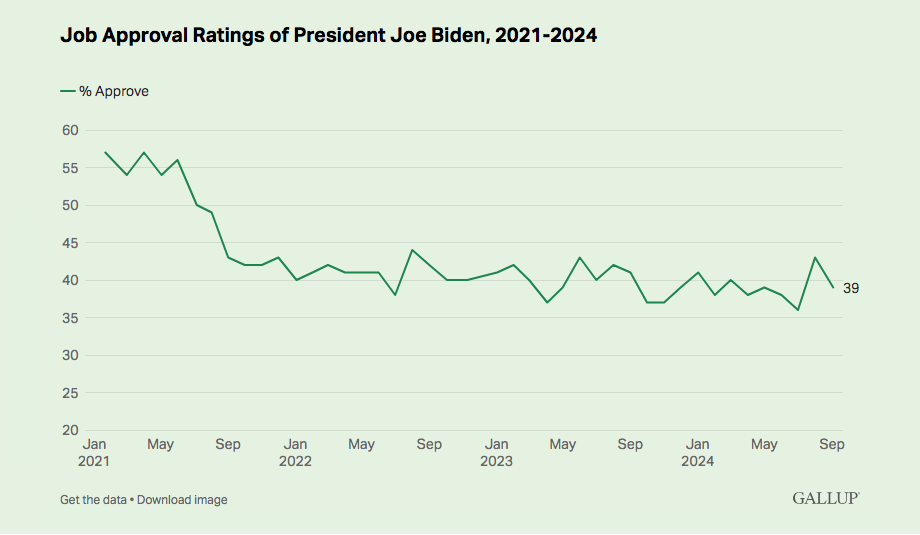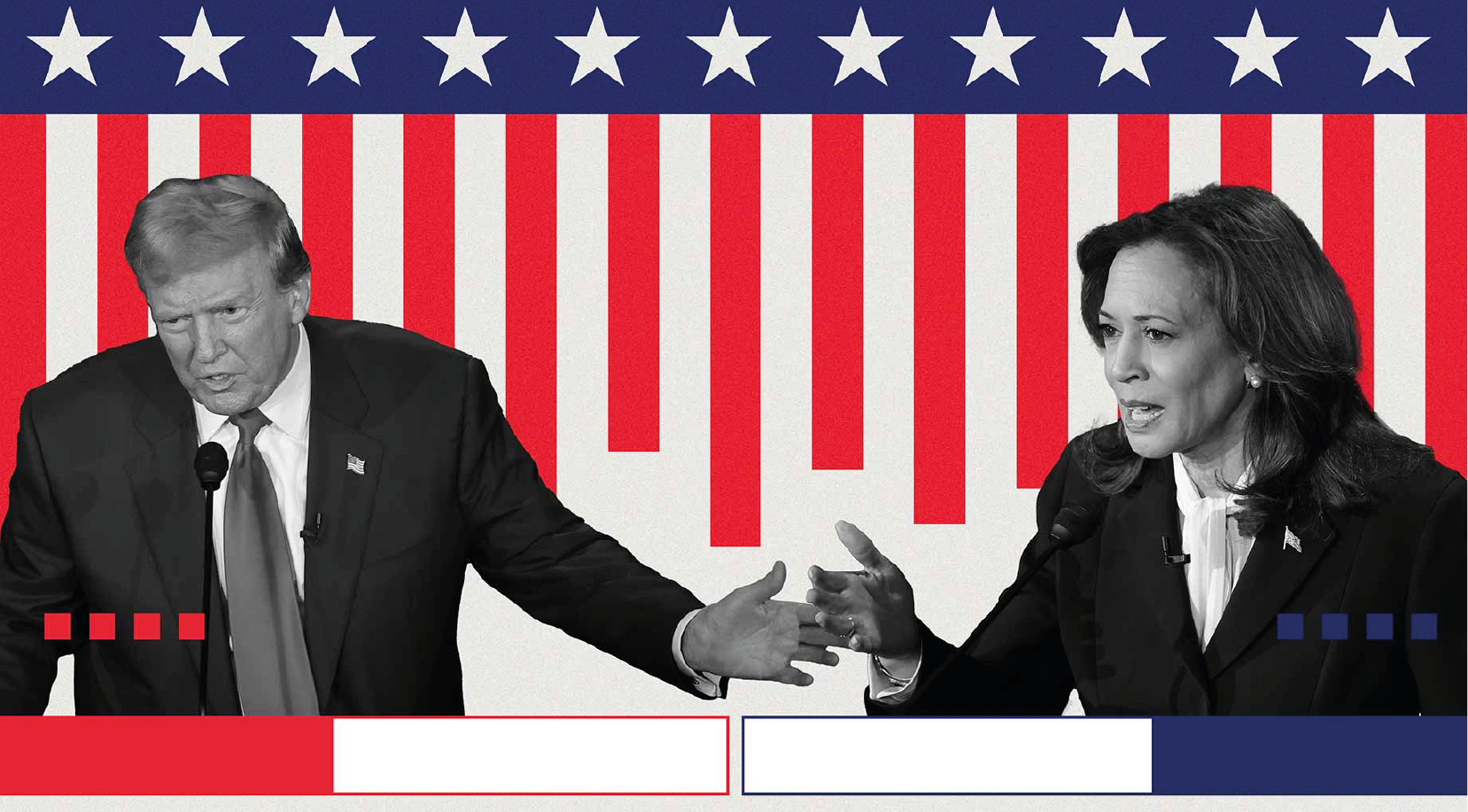(ZENIT News / Washington, 09.19.2024).- As the 2024 presidential race heats up, both Donald Trump and Kamala Harris find themselves facing a steep challenge: winning over the American public. According to a recent Gallup poll conducted in mid-September, the favorability ratings of both candidates remain under 50%, with Trump at 46% and Harris at 44%. These figures highlight the increasing difficulty for modern political candidates to secure broad public approval.
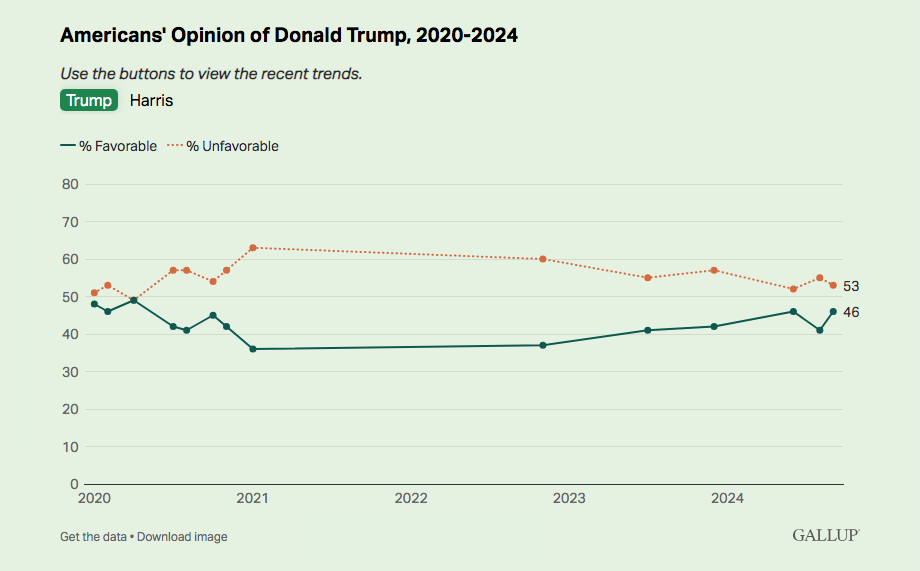
Negative Perceptions Prevail
Despite small gains, both Trump and Harris are viewed more negatively than positively by the electorate. Trump’s unfavorable rating exceeds his favorable one by seven points, while Harris faces a 10-point deficit in her favorability. This trend mirrors the difficulties both candidates have had in recent cycles, where public opinion has increasingly turned against major political figures. Although each enjoys strong support from their respective party bases, both struggle to appeal to independents—a critical swing group. Trump holds a slight edge with independents, polling at 44% favorability compared to Harris’ 35%.
A Historic Shift in Voter Sentiment
The consistently low favorability ratings mark a departure from historical norms. In past elections, at least one candidate typically garnered majority support by September. However, since 2016, favorability ratings have stayed below 50% for presidential hopefuls. Trump’s current rating is better than it was at this stage in 2016 and 2020, while Harris’ favorability aligns with Joe Biden’s from the 2020 cycle. These low ratings are part of a broader pattern that has emerged over the last decade, where voter skepticism towards candidates has deepened.
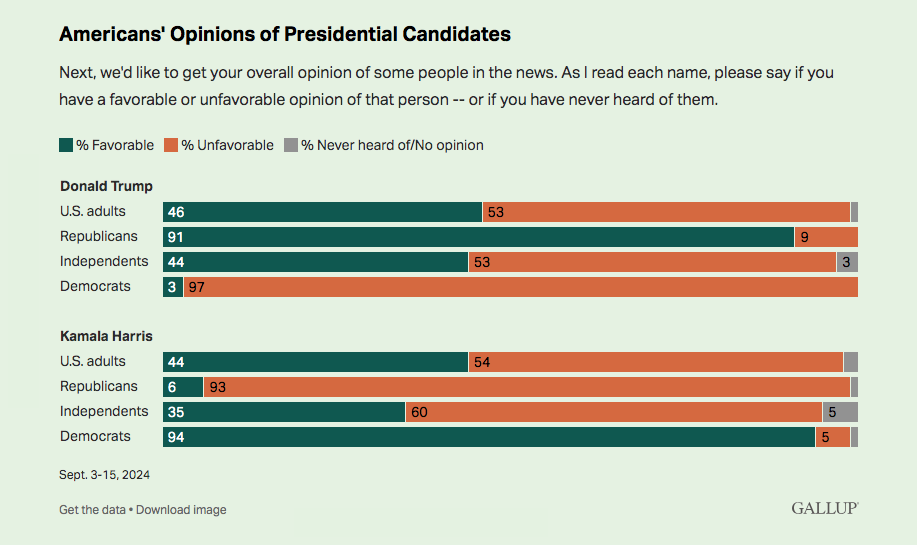
Since 1992, only a handful of candidates—including Mitt Romney and George H.W. Bush—entered the final leg of their campaigns with similar sub-50% favorability. Trump’s current position, while an improvement, underscores the continuing polarization of the American electorate. Harris, on the other hand, faces a challenge in establishing her own political identity distinct from Biden’s, particularly as her approval ratings have slipped following her Democratic nomination.
VP Candidates Remain in the Shadows
While the spotlight is on Trump and Harris, their running mates—Minnesota Governor Tim Walz and Ohio Senator J.D. Vance—are also trying to make their mark. Nearly 20% of Americans remain unfamiliar with both vice-presidential candidates. Among those who have formed an opinion, Walz holds a slight favorability edge over Vance, especially among independents. Walz is viewed favorably by 41% of voters, with a nearly equal share holding an unfavorable view. In contrast, Vance’s unfavorability stands at 47%, overshadowing his 36% favorability.
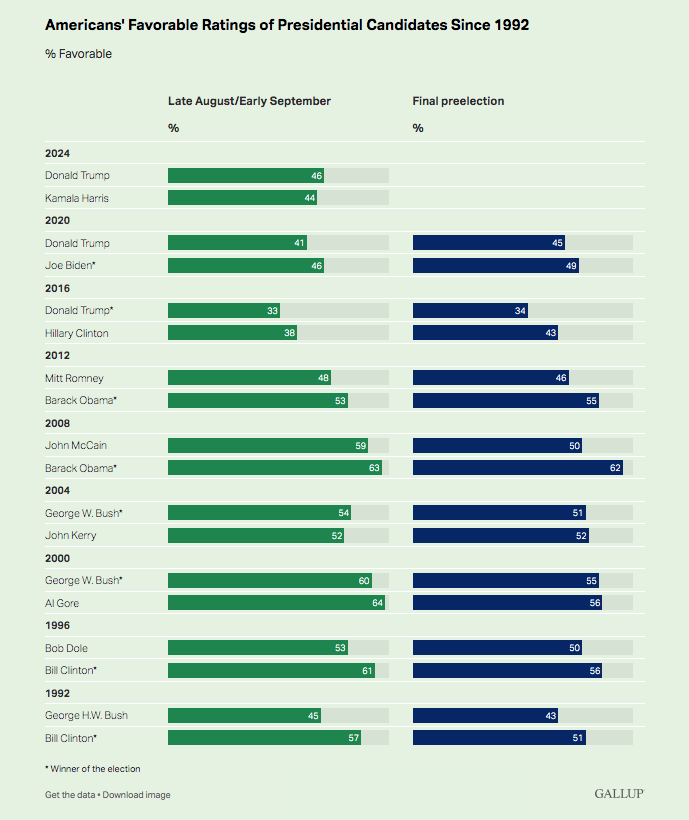
Both Walz and Vance have garnered strong support from their party bases, with Walz being favorably viewed by 79% of Democrats and Vance by 74% of Republicans. However, independents remain skeptical, and a significant portion of the electorate has yet to form solid opinions on either candidate. This reflects a broader trend where vice-presidential candidates have struggled to break through with voters in the early stages of campaigns.
Job Approval Declines for Harris and Biden
In tandem with Harris’ falling favorability, her job approval rating also slipped to 44%, down from 47% last month. Her approval is buoyed by strong support among Democrats, but independent voters continue to be a weak point, with just 38% expressing approval. Meanwhile, approval from Republicans is virtually nonexistent, sitting at 2%.
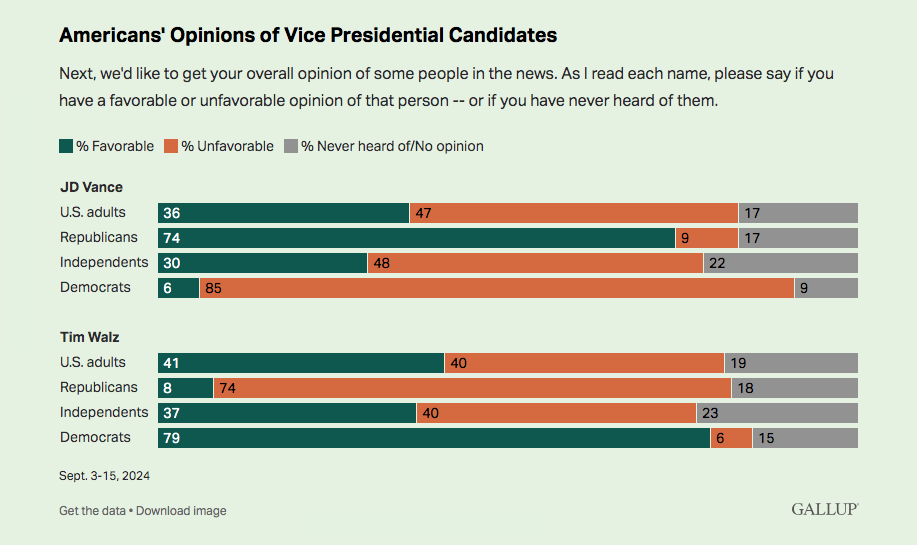
Similarly, President Biden’s approval rating has also dipped from 43% in August to 39% in September. This comes after Biden’s decision to forgo a 2024 run, which initially sparked a brief boost in approval. Biden’s support remains solid among Democrats (85%) but has weakened among independents (31%) and Republicans (3%).
A Tight Race Ahead
With both candidates facing similar public perception challenges, the race for the White House remains closely contested. If these negative ratings persist, the 2024 election could mark the third consecutive presidential cycle where neither major candidate enjoys majority favorability, a stark contrast to earlier decades. Historically, the candidate with higher favorability tends to secure victory, making the nearly identical ratings for Trump and Harris an indication of a potentially razor-thin margin in November.
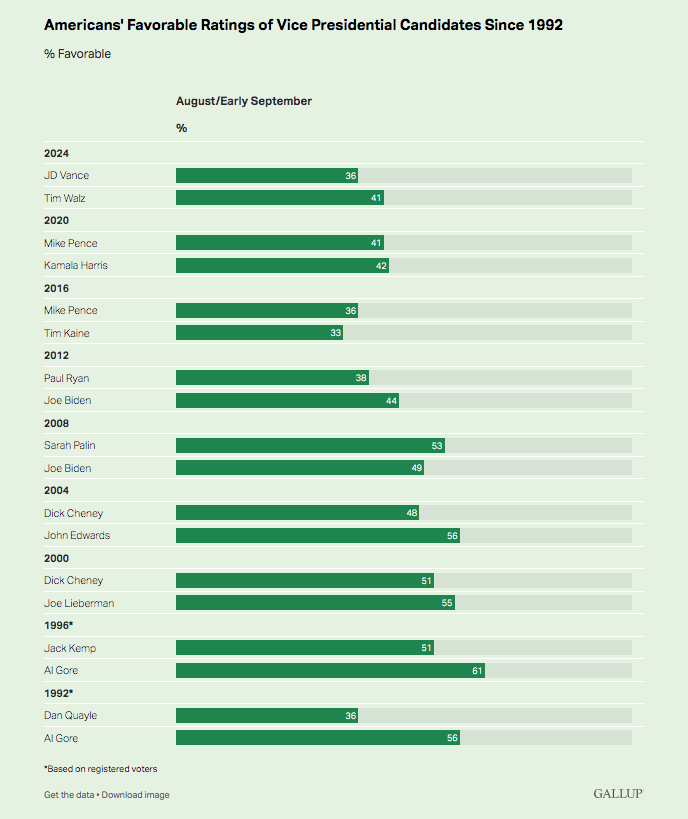
As the campaigns progress, the battle for independent voters will likely prove decisive. Both candidates must work to shift public perception, but with polarization entrenched, changing minds may be harder than ever in this election cycle.
Thank you for reading our content. If you would like to receive ZENIT’s daily e-mail news, you can subscribe for free through this link.
